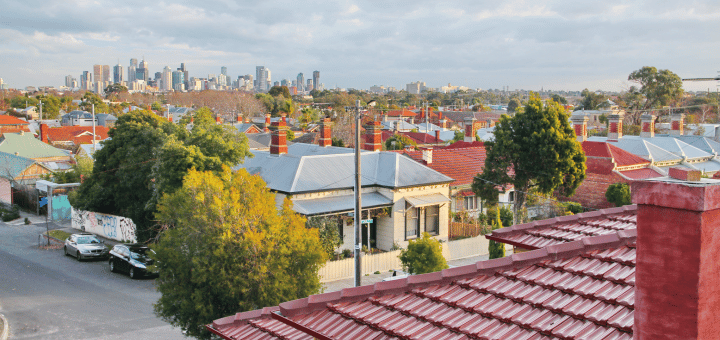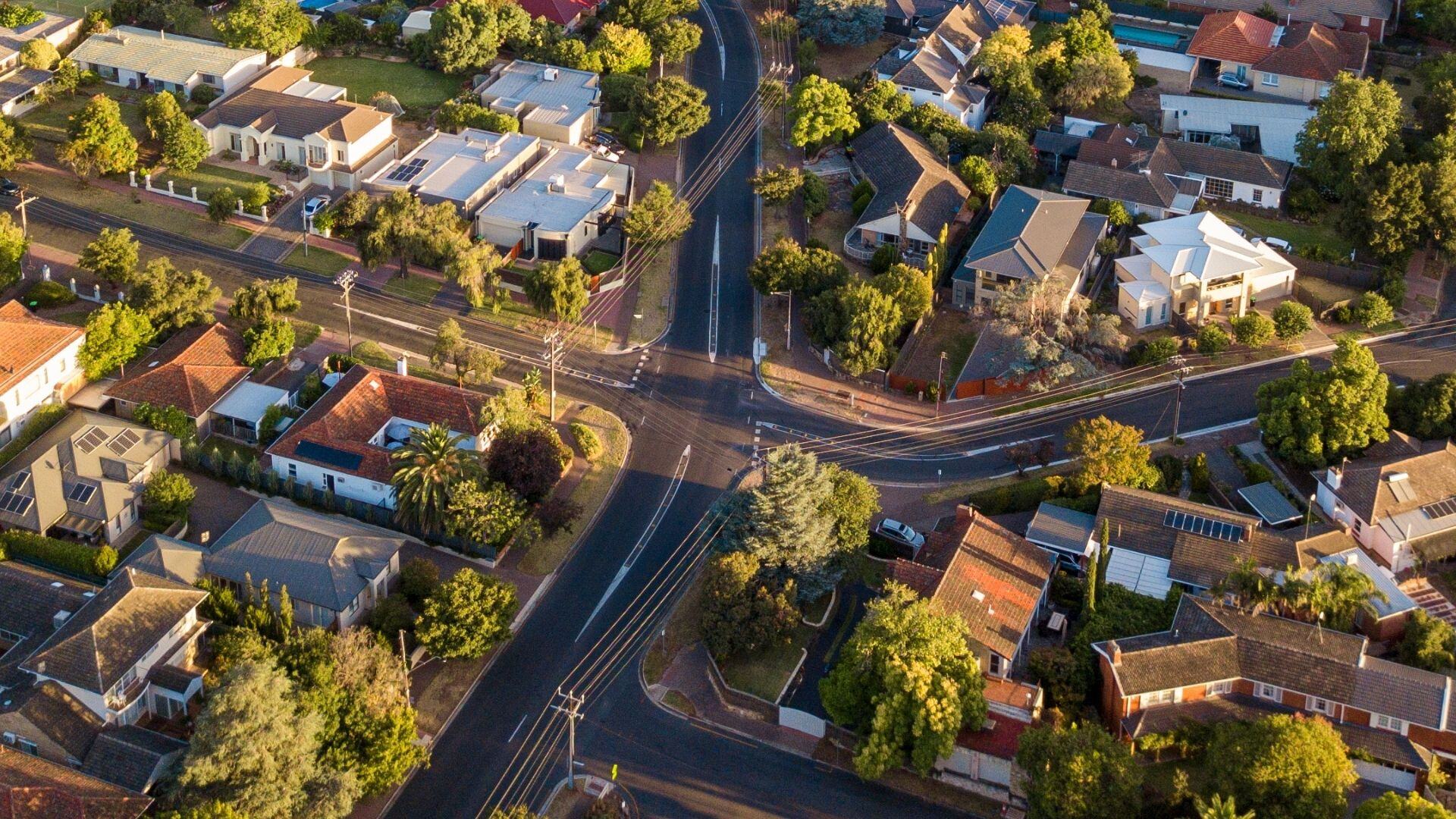Everyone loves keeping up with and discussing housing prices. But most conversations focus on high-level median figures. In this blog, Georgia demonstrates the importance of understanding entry-level prices, both regionally and at a local level to tell a more nuanced story. What's happening with entry-level housing prices in your area?
There are endless articles covering the latest updates in housing prices. The vast majority of these articles focus on the median price – the 50th percentile of the market. This means that 50% of housing prices are lower than this figure, and 50% are higher in cost. In today's fast-paced real estate market, understanding entry-level house prices is crucial for policymakers, as well as individuals. Entry-level prices are considered to be the 25th percentile of the market – 25% of sales are under this figure, and 75% are higher. It's generally seen to be the price point at which first-home buyers enter the market, which is why it is so important to understand in the context of housing affordability. The housing crisis is unlikely to resolve if those who have never owned a home are unable to enter the market.
.id (informed decisions) recently completed their 6-monthly update of housing sales and rental prices on housing.id, which gives valuable insights into entry-level housing prices across Australia. The data, updated to June 2024, shows that entry-level prices have risen in most areas.
Entry-level housing prices are growing in most capital city areas
Firstly, a look at houses in capital city areas. The headline of this data update is that the entry-level house price in Greater Sydney has exceeded $1 million for the first time. This represents a growth of 5.9% since June 2023. However, Greater Perth has experienced the most significant growth over the past 12 months of 34%. There are also two capital cities, Melbourne and Hobart, that are bucking this trend, with entry-level prices stabilising or decreasing.
Entry-level house prices, Greater Capital City areas, 2019-2024
Source: Compiled and presented by .id (informed decisions) using data from PropTrack Pty Ltd
So if entry-level house prices are increasing, what about units? Units are often touted as the answer to providing affordable purchases. PropTrack data for June 2024 shows that, in general, entry-level unit prices are also rising across the country. In Greater Brisbane, Adelaide and Perth, prices have increased by more than 15% in the past year. Entry-level unit prices were fairly stable in Greater Melbourne, and decreased slightly in Greater Sydney.
Entry-level housing prices are increasing in Regional WA and across regional Australia
In regional areas of Australia, entry-level house prices are also rising. The greatest increase was in Regional WA, where the price increased 17.5%, from $315,000 to $370,000. The entry-level unit market in Regional areas is experiencing similar increases, with prices in Regional Queensland increasing 13% in the past 12 months.
Entry-level house prices, Regional areas, 2019-2024strong>
Source: Compiled and presented by .id (informed decisions) using data from PropTrack Pty Ltd
How do regional trends play out locally?
Rising entry-level prices pose significant challenges for individuals and communities alike. As housing becomes increasingly unaffordable, the implications stretch beyond the realm of real estate, affecting economic stability, social equity, and overall quality of life. It is these things that play out at a local level, and the issues that Local Governments are working to address. So let's take a look at how some of the higher level trends play out at a local level.
Declining prices in City of Hobart
As seen in the data earlier, the Greater Hobart area is experiencing a decline in entry-level house prices, and this can be seen in the data for the City of Hobart, where entry-level prices have declined by 4% in the past 12 months. In many ways, this is a good news story for affordability. However, this is where the wider demographic context become important: entry-level prices in Hobart spiked significantly during the COVID-19 era, partly driven by record high levels of migration to the area and very low interest rates. With these trends now reversed, entry-level house prices are decreasing, yet are still 25% higher than in June 2019.
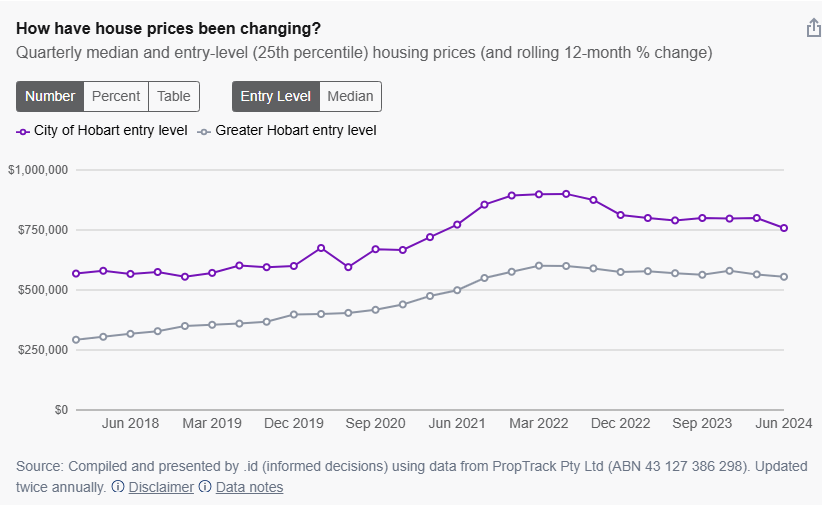
Rapid growth in Townsville
The City of Townsville is an example of where regional-level statistics hide an important local story. As mentioned above, Regional Queensland has experience significant growth in entry-level prices over the past 12 months. However, the growth in Townsville has been of a greater magnitude. Entry-level prices for Townsville have risen 26% in the past 12 months, double the growth rate seen across Regional Queensland.
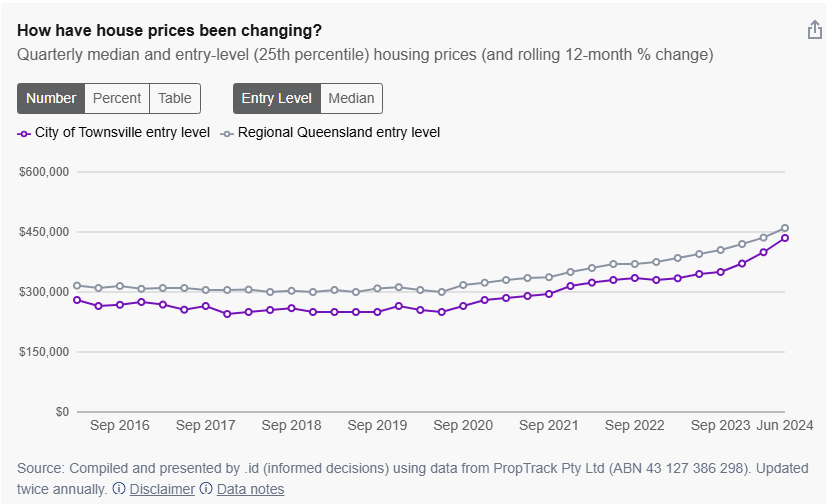
What do these trends mean for local affordability? In the City of Townsville, we can see that entry-level houses are now higher than what the average household in Townsville can afford.
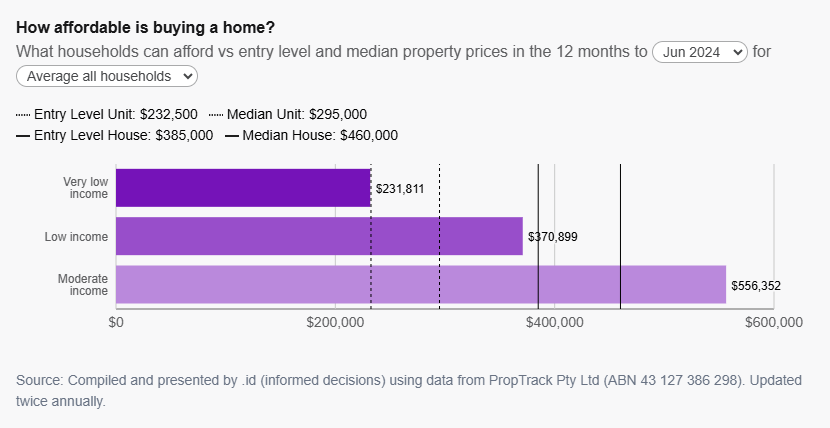
Housing trends in your
These are just two examples of how entry-level house price trends transpire locally. Jump on to housing.id to see how your LGA fares, or if your area doesn’t currently have access to housing.id, get in touch with our housing experts to find out more: housing@id.com.au




